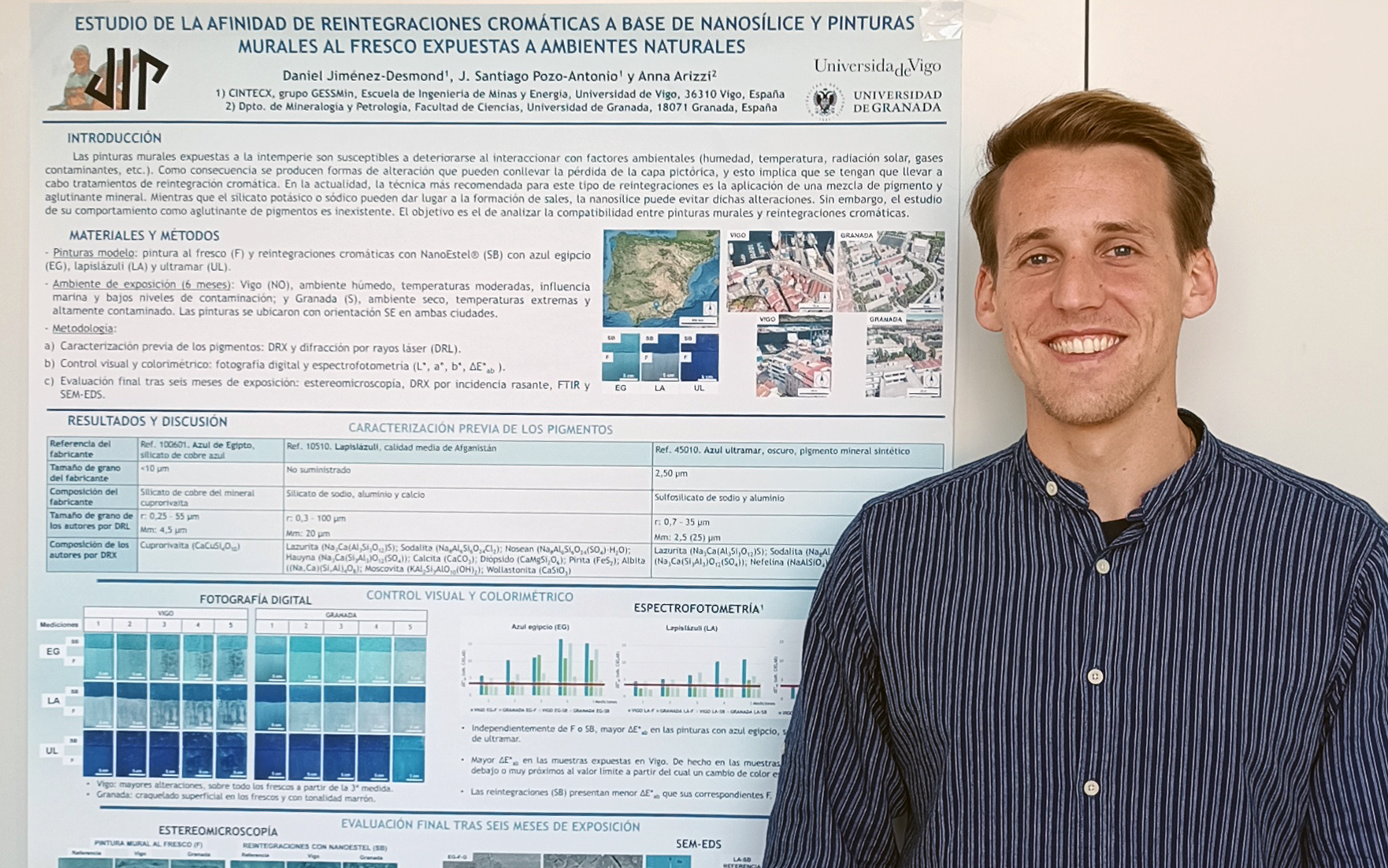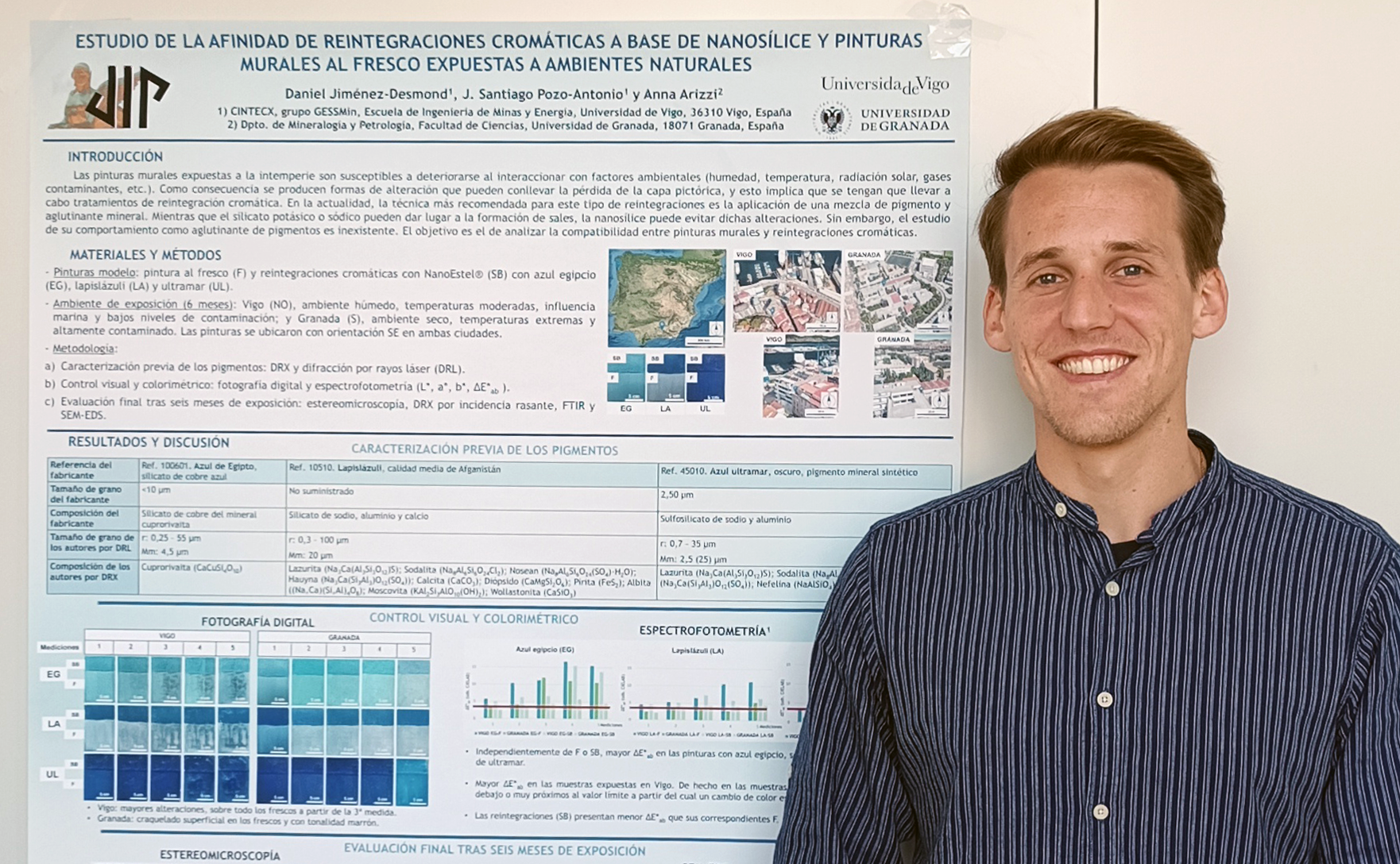In March 2023, our colleague Daniel Jiménez has participated in the congress Jornadas de Investigadores Júnior en Patrimonio. In this poster Daniel showed the research Study of the affinity of chromatic reintegrations based on nanosilica and fresco wall paintings exposed to natural environments.
Wall paintings form part of the architecture in which they are located and therefore they are vulnerable to deterioration when interacting with environmental factors. This results in forms of alteration that can lead to the loss of the pictorial layer. In this way, conservators and restorers have to carry out chromatic reintegration treatments. The most recommended technique for out-door exposed wall paintings is the application of a mixture of pigments and a mineral binder such as potassium or sodium silicate, where nanosilica should also be considered. Although its use as a consolidant for stone substrates has been studied, its behaviour as a binder for chromatic reintegrations is non-existent. In order to analyse the compatibility between wall paintings and chromatic reintegrations, mock-ups were prepared and exposed for 6 months in two different exposure environments. On the one hand in Vigo (NW Spain), with a humid environment, moderate temperatures, marine influence and low levels of pollution. And on the other hand in Granada (S Spain) with a dry environment, extreme temperatures, and a highly polluted environment.
Mock-ups exposed to Vigo suffered the most in terms of colour change and neoformations, specially frescoes. Whilst in both cities carbonates where formed, sodium chloride salts were also formed in Vigo as a result of marine exposure.



